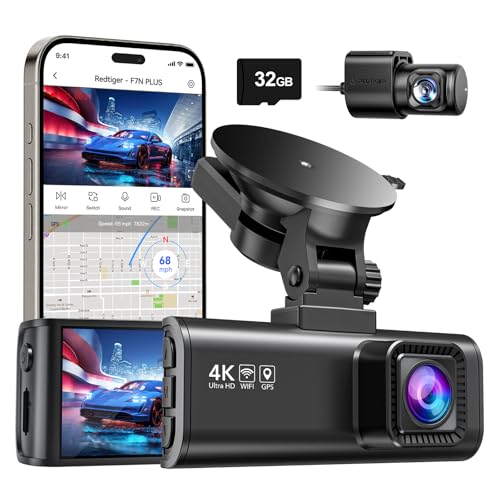Key Takeaways
- Underwater 360 cameras offer immersive, high-resolution content, capturing diving adventures in stunning detail with full 360° views.
- Key features to consider include waterproof depth ratings, image and video quality, battery life, and user-friendly controls.
- High-end models like the Insta360 X3 and GoPro MAX excel in professional-grade performance, while budget options balance cost and essential features.
- Beginner-friendly cameras, such as the Akaso Brave 7 LE, focus on simplicity and easy usability for divers new to 360 photography.
- Proper setup, steady shooting techniques, and consistent maintenance ensure high-quality footage and extend the camera’s lifespan.
- Selecting the right underwater 360 camera enhances your diving experience, whether for casual exploration or professional videography.
Capturing the magic of underwater adventures has never been easier, thanks to 360 cameras designed for diving. These innovative devices let you relive every breathtaking moment, from vibrant coral reefs to elusive marine life, in stunning detail and immersive angles.
With so many options on the market, choosing the right underwater 360 camera can feel overwhelming. From durability to image quality and ease of use, there’s a lot to consider. I’ve rounded up the best models to help you find the perfect companion for your next dive.
What Are Underwater 360 Cameras?
Underwater 360 cameras are specialized devices designed to capture spherical images and videos beneath the surface. Unlike traditional cameras, they record a full 360° view, creating immersive content that allows viewers to explore underwater environments from all angles. These cameras are popular among divers, marine photographers, and videographers for providing a sense of “being there.”
Most models include dual-lens systems to stitch together footage seamlessly. This results in high-resolution video, often reaching 5.7K or higher, and detailed still images. Many models feature waterproof housing or bodies rated to depths of 10 meters or more, enabling safe operation during diving activities. Some even have advanced image stabilization to produce smooth footage despite underwater movements.
Key features include durable builds, extended battery life for longer dives, and compatibility with editing software for creating professional-quality virtual reality content. Whether filming vibrant coral reefs or fast-moving sea creatures, these cameras bring underwater scenes to life.
Key Features To Look For In Underwater 360 Cameras
Selecting the right underwater 360 camera ensures you capture vibrant, immersive content beneath the surface. I’ve outlined essential features to consider when evaluating these cameras for diving.
Waterproofing And Depth Ratings
Waterproofing defines whether a 360 camera can withstand underwater conditions. Depth ratings specify the maximum depth a camera can operate without damage. For instance, some models support use up to 10 meters, while advanced options reach 30 meters or more with proper housing. Always match the camera’s waterproofing specs to your diving goals.
Image And Video Quality
High-resolution image and video output directly impacts your content’s clarity and detail. Many underwater 360 cameras offer 5.7K video resolutions and vivid HDR for lifelike shots. Look for options with dual lenses and advanced stitching capabilities to maintain seamless transitions between frames. Features like low-light optimization ensure vibrant colors even in deeper, dimmer waters.
Battery Life And Durability
Extended battery life matters during long dives, as frequent recharging isn’t practical underwater. Most reliable models provide 60–90 minutes of continuous recording, with some featuring replaceable batteries for added flexibility. Durable designs resist corrosion and damage from saltwater, ensuring consistent performance over time.
Ease Of Use And Controls
« Smartphone-Based 360 Cameras: Pros and Cons You Need to Know Before Buying
Revolutionize Your Creativity: How 360 Cameras Support Creative Projects Like Never Before »
User-friendly controls simplify real-time adjustments during dives. Intuitive touchscreen displays and accessible button placements allow efficient settings changes, even with gloves. Compatibility with companion apps for smartphones ensures quick files transfer and additional control options out of water.
Top Underwater 360 Cameras For Diving
Capturing underwater worlds with a 360 camera adds a new dimension to photography and videography. These models cater to different needs, from professional-grade footage to entry-level simplicity.
High-End Models
High-end underwater 360 cameras excel in image quality and depth ratings. The Insta360 X3 is a standout, offering 5.7K 360° video resolution, advanced HDR, and seamless stitching for immersive footage. With a dedicated dive case, it handles depths up to 50 meters. Its FlowState stabilization ensures smooth footage even in strong underwater currents.
The GoPro MAX combines ruggedness with professional features, including 5.6K resolution and a spherical capture mode. It withstands depths of 40 meters with the dive housing accessory and delivers sharp imagery with vivid colors in various lighting conditions.
For professionals, the Ricoh Theta X provides 5.7K video output, a touchscreen for intuitive control, and an IPX8-rated waterproof housing. It’s favored for its excellent dynamic range and high-performance stitching algorithms.
Budget-Friendly Options
Affordable models balance quality and cost without sacrificing key features. The Kandao QooCam 8K offers 4K underwater video with a dive housing, making it a strong choice for those wanting vibrant captures at depths up to 30 meters. It’s compact, lightweight, and integrates well with smartphone apps for easy editing.
The Vuze XR is another budget-friendly option. It shoots 5.7K resolution and switches between 360° and 180° modes. With its waterproof case, it works down to 40 meters. Despite its price point, it delivers clear underwater videos suitable for social media sharing.
Best Cameras For Beginners
Beginner-friendly models focus on simplicity. The Akaso Brave 7 LE shoots 4K video and offers solid image quality. Paired with a dive case, it reaches depths of 40 meters. Its touchscreen features user-friendly navigation, and it pairs effortlessly with apps for quick sharing.
The Mi Sphere Camera introduces newcomers to 360 content with its affordable pricing and basic functionality. It produces 3.5K video and has water-resistance capabilities enhanced by a dive kit. This model is ideal for casual divers who want to explore immersive underwater photography.
The Garmin Virb 360 simplifies 360 captures with auto-stitching and an intuitive app interface. It records stabilized 4K video and handles depths up to 10 meters with waterproofing, making it an excellent introduction for entry-level divers.
Tips For Using 360 Cameras While Diving
Using a 360 camera for underwater diving requires preparation and smart techniques to ensure stunning, immersive footage. Below, I’ve outlined key tips based on my experience with underwater photography and videography.
Setting Up Your Camera
Proper preparation ensures better performance during dives. Before you dive, inspect the camera’s waterproof housing or seals for cracks or debris, as even slight imperfections can compromise its waterproofing. Charge the battery fully and format the memory card to prevent interruptions. Adjust resolution and frame rate settings for underwater conditions; high resolutions like 5.7K and a frame rate of at least 30fps work best for clear, detailed footage. If your camera allows, calibrate white balance for underwater use to account for light refraction and color loss.
Capturing The Best Shots
Positioning and movement determine the quality of your shots. Hold the camera steady and use slow, deliberate movements to avoid distortion in your footage. For dynamic scenes, I recommend using a monopod or floating grip to capture wider angles without camera shake. Shoot in well-lit areas or use underwater lights to enhance clarity, particularly in deeper waters where natural light fades. When capturing marine life, maintain distance to avoid startling subjects and let the camera’s 360° field of view do the work.
Maintenance And Care Tips
Proper maintenance prolongs your camera’s lifespan and ensures consistent performance. After each dive, rinse the camera and its housing with fresh water to remove salt and debris. Carefully dry it with a microfiber cloth before opening the housing to avoid water entering sensitive compartments. Store batteries in a cool, dry place to prevent damage, and periodically check seals and O-rings for wear. Keeping your camera and accessories in peak condition will save time and costs in the long run.
Conclusion
Exploring the underwater world with a 360 camera transforms diving into a truly immersive experience. These cameras not only capture breathtaking views but also preserve memories in stunning detail. Whether you’re a professional or a beginner, there’s a model out there that fits your needs and budget.
By considering key features like waterproofing, image quality, and ease of use, you’ll find a reliable companion for your underwater adventures. Investing in the right gear ensures you can focus on enjoying the dive while creating incredible content to relive and share for years to come.










